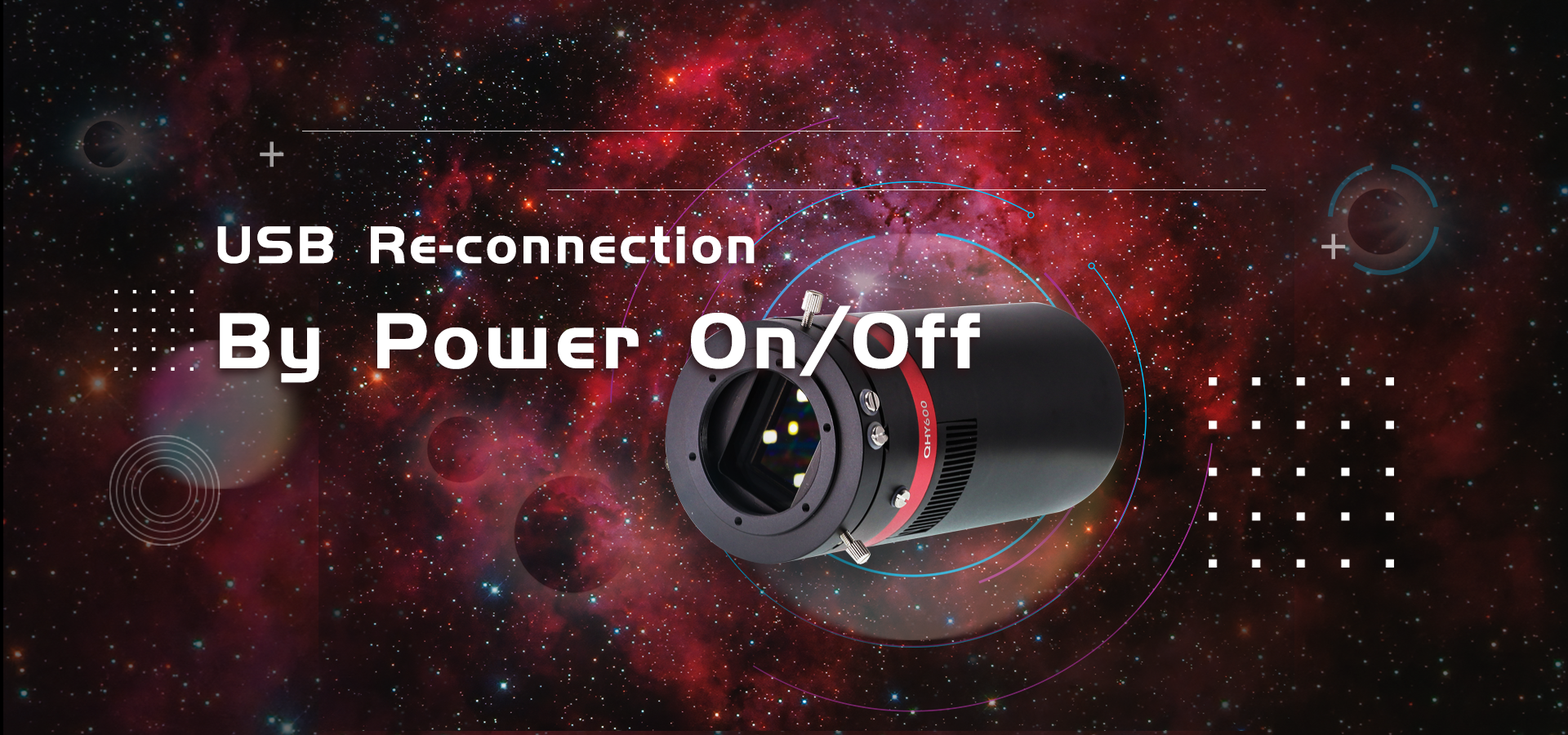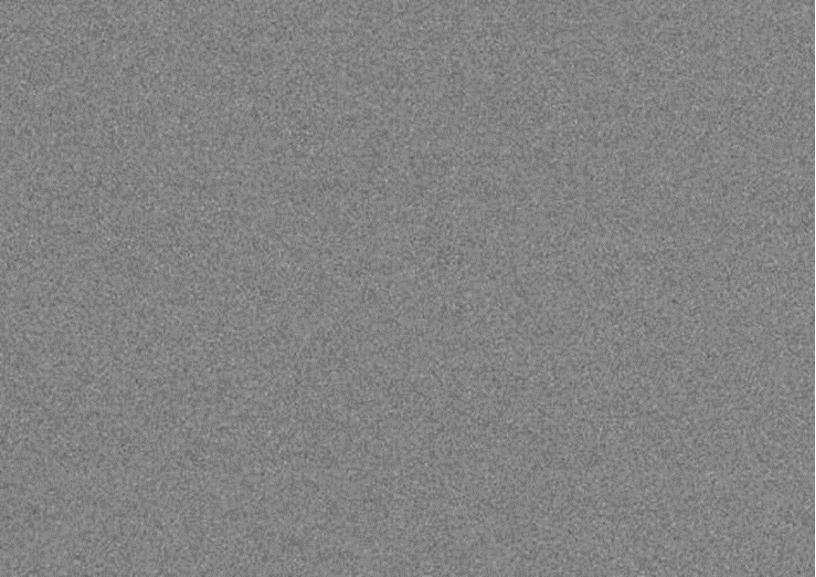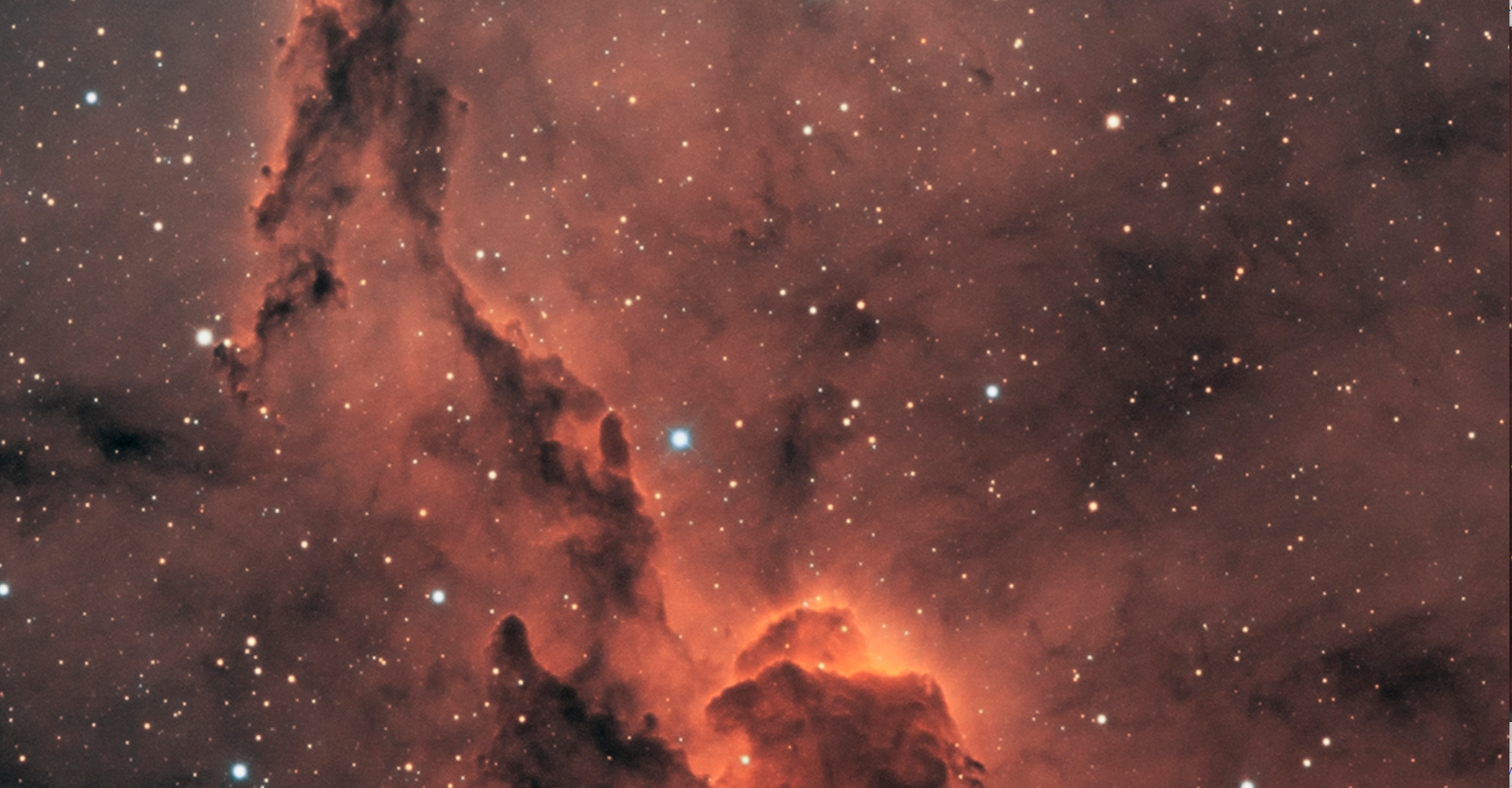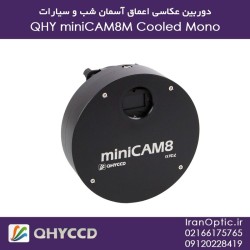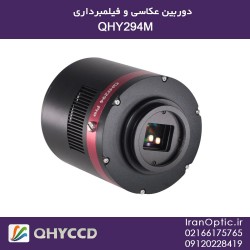فروشگاه تلسکوپ، دوربین عکاسی، ابزارهای رصدی، آسمان نما، رصدخانه، مناسب دانشآموزان و دانشجویان، بهترین قیمتها، ارزان و حرفهای، به همراه مشاوره و راهنمایی پیش و پس از خرید.

هیچ محصولی وجود ندارد
فقط آنلاین
QHY461PH
محصول جدید
By buying this product you can collect up to 75200000 loyalty points. Your cart will total 75200000 loyalty points that can be converted into a voucher of 15,040,000 تومان.
- Remove this product from my favorite's list.
- Add this product to my list of favorites.
- ارسال به یک دوست
- چاپ
اطلاعات بیشتر
The QHY411/461 has both USB3.0 and 2*10GigaE interfaces. The 2*10GigaE version supports a higher readout speed.
QHY411/QHY461 have both mono and color version. The application of this camera includes astronomy imaging, astronomy photography, space object survey, satellite tracking, etc.
Benefiting from its back-illuminated pixel structure, the QHY411 has a large full well of 80ke-. And when using 2 * 2 binning, the full well can reach 320ke-, corresponding to a merged pixel size of 7.5um * 7.5um; while at 3 * 3 binning, the full well can be up to 720ke- with a large pixel size of 11um * 11um, which is much larger than any other CCD or CMOS sensor of the same pixel size. Combined with the low readout noise, the camera has a large dynamic range advantage.
 Native 16 bit A/D: The new Sony sensor has native 16-bit A/D on-chip. The output is real 16-bits with 65536 levels. Compared to 12-bit and 14-bit A/D, a 16-bit A/D yields higher sample resolution and the system gain will be less than 1e-/ADU with no sample error noise and very low read noise.
Native 16 bit A/D: The new Sony sensor has native 16-bit A/D on-chip. The output is real 16-bits with 65536 levels. Compared to 12-bit and 14-bit A/D, a 16-bit A/D yields higher sample resolution and the system gain will be less than 1e-/ADU with no sample error noise and very low read noise.
 BSI: One benefit of the back-illuminated CMOS structure is improved full well capacity. This is particularly helpful for sensors with small pixels. In a typical front-illuminated sensor, photons from the target entering the photosensitive layer of the sensor must first pass through the metal wiring that is embedded just above the photosensitive layer. The wiring structure reflects some of the photons and reduces the efficiency of the sensor. In the back- illuminated sensor the light is allowed to enter the photosensitive surface from the reverse side. In this case the sensor’s embedded wiring structure is below the photosensitive layer. As a result, more incoming photons strike the photosensitive layer and more electrons are generated and captured in the pixel well. This ratio of photon to electron production is called quantum efficiency. The higher the quantum efficiency the more efficient the sensor is at converting photons to electrons and hence the more sensitive the sensor is to capturing an image of something dim.
BSI: One benefit of the back-illuminated CMOS structure is improved full well capacity. This is particularly helpful for sensors with small pixels. In a typical front-illuminated sensor, photons from the target entering the photosensitive layer of the sensor must first pass through the metal wiring that is embedded just above the photosensitive layer. The wiring structure reflects some of the photons and reduces the efficiency of the sensor. In the back- illuminated sensor the light is allowed to enter the photosensitive surface from the reverse side. In this case the sensor’s embedded wiring structure is below the photosensitive layer. As a result, more incoming photons strike the photosensitive layer and more electrons are generated and captured in the pixel well. This ratio of photon to electron production is called quantum efficiency. The higher the quantum efficiency the more efficient the sensor is at converting photons to electrons and hence the more sensitive the sensor is to capturing an image of something dim.
 Zero Amplify Glow: This is also a zero amplifer glow camera.
Zero Amplify Glow: This is also a zero amplifer glow camera.
 TRUE RAW Data: In the DSLR implementation there is a RAW image output, but typically it is not completely RAW. Some evidence of noise reduction and hot pixel removal is still visible on close inspection. This can have a negative effect on the image for astronomy such as the “star eater” effect. However, QHY Cameras offer TRUE RAW IMAGE OUTPUT and produces an image comprised of the original signal only, thereby maintaining the maximum flexibility for post-acquisition astronomical image processing programs and other scientific imaging applications.
TRUE RAW Data: In the DSLR implementation there is a RAW image output, but typically it is not completely RAW. Some evidence of noise reduction and hot pixel removal is still visible on close inspection. This can have a negative effect on the image for astronomy such as the “star eater” effect. However, QHY Cameras offer TRUE RAW IMAGE OUTPUT and produces an image comprised of the original signal only, thereby maintaining the maximum flexibility for post-acquisition astronomical image processing programs and other scientific imaging applications.
 Anti-Dew Technology: Based on almost 20-year cooled camera design experience, The QHY cooled camera has implemented the fully dew control solutions. The optic window has built-in dew heater and the chamber is protected from internal humidity condensation. An electric heating board for the chamber window can prevent the formation of dew and the sensor itself is kept dry with our silicon gel tube socket design for control of humidity within the sensor chamber.
Anti-Dew Technology: Based on almost 20-year cooled camera design experience, The QHY cooled camera has implemented the fully dew control solutions. The optic window has built-in dew heater and the chamber is protected from internal humidity condensation. An electric heating board for the chamber window can prevent the formation of dew and the sensor itself is kept dry with our silicon gel tube socket design for control of humidity within the sensor chamber.
 Cooling: In addition to dual stage TE cooling, QHYCCD implements proprietary technology in hardware to control the dark current noise.
Cooling: In addition to dual stage TE cooling, QHYCCD implements proprietary technology in hardware to control the dark current noise.
The camera is designed to use the +12V to reboot the camera without disconnecting and reconnecting the USB interface. This means that you can reboot the camera simply by shutting down the +12V and then powering it back on. This feature is very handy for remote controlling the camera in an observatory. You can use a remotely controlled power supply to reboot the camera. There is no need to consider how to reconnect the USB in the case of remote control.
You may find some types of thermal noise can change with time in some back-illuminated CMOS cameras. This thermal noises has the characteristic of the fixed position of typical thermal noise, but the value is not related to the exposure time. Instead, each frame appears to have its own characteristics. The QHY600 / 268C uses an innovative suppression technology that can significantly reduce the apparent level of such noise.
It is common behavior for a CMOS sensor to contain some horizontal banding. Normally, random horizontal banding can be removed with multiple frame stacking so it does not affect the final image. However, periodic horizontal banding is not removed with stacking so it may appear in the final image. By adjust the USB traffic in Single Frame mode or Live Frame mode, you can adjust the frequency of the CMOS sensor driver and it can optimize the horizontal banding appeared on the image. This optimized is very effective to remove the periodic banding in some conditions.
A typical Periodic Horizontal Noise under certain USB_TRAFFIC values.
After Adjusting the USB Traffic to avoid the periodic horizontal noise.
| Model | QHY411 | QHY461 |
| Image Sensor | SONY IMX411 BSI CMOS Sensor | SONY IMX461 BSI CMOS Sensor |
| Pixel Size | 3.76um x 3.76um | 3.76um x 3.76um |
| Color / Mono Version | Both Available | Both Available |
| Image Resolution | 14304 x 10748 (Inlcudes the optic black area and over scan area) | 11760 × 8896 |
| Effective Pixels | 151 Megapixels | 102 Megapixels |
| Effective Image Area | 54mm x 40mm | 44mm x 33mm |
| Sensor Surface Glass | AR+AR multi-coating Clear Glass | AR+AR Multi-Coating Clear Glass |
| Full Well Capacity (1×1, 2×2, 3×3) | 50ke- / 200ke- / 450ke- in Standard Mode 80ke- / 320ke- / 720ke- in Extend Fullwell Mode | 50ke- / 200ke- / 450ke- in Standard Mode 80ke- / 320ke- / 720ke- in Extend Full Well Mode |
| A/D | 16-bit (0-65535 greyscale) | 16-bit (0-65535 greyscale) for 1X1Binning 18bit in 2X2 19BIT in 3X3 20BIT in 4*4 software Binning |
| Sensor Size | TYPICAL 4.2inch | TYPICAL 3.4inch |
| Read Noise | Apporx 1 to 3 e (in HGC Mode) | 1e to 3.7e (in HGC mode) |
| Dark Current | Apporx 0.0011e/pixel/sec at -20C | Approx 0.003e/pixel/sec @ -20C |
| Exposure Time Range | 20us – 3600sec | 50us – 3600sec |
| Frame Rate | USB3.0 Port: Full Frame Resolution 2FPS @ 8BIT 1FPS @ 16BIT 5000Lines 4FPS @ 8BIT 2FPS @16BIT 3000Lines 7FPS @ 8BIT 3.3FPS @16BIT 2000Lines 10FPS@8BIT 5.5FPS @16BIT 1000Lines 20FPS@8BIT 10FPS @16BIT 500Lines 35FPS@8BIT 19FPS @ 16BITFiber Port : TBD | 2.7FPS @ 8BIT 1.3FPS@16BIT on USB3.0 2.7FPS @ 16BIT 6FPS @ 14BIT on 10Gigabit Fiber |
| Shutter Type | Electric Rolling Shutter | Electric Rolling Shutter |
| Computer Interface | USB3.0 and 2*10Gigabit Fiber | USB3.0 and 2*10Gigabit Fiber |
| Trigger Port | Programmable TrigOut, High Speed Sync Port / GPS interface Port | Programmable TrigOut, High Speed Sync Port / GPS interface Port |
| Filter Wheel Interface | 4PIN QHYCCD CFW Port | 4PIN QHYCCD CFW Port |
| Built-in Image Buffer | 2GByte | 2GByte |
| FPGA Upgrade Via USB | Support | Support |
| Cooling System | Dual Stage TEC cooler(-35C below ambient with air cooling, -45C below ambient with ambient temperature water cooling). More deltaT below ambient can be achieve by using the cooled water cooling. (Test temperature +20°) Fan Cooling/Water Cooling Compatible | Dual Stage TEC cooler(-35C below ambient with air cooling, -45C below ambient with ambient temperature water cooling). More deltaT below ambient can be achieve by using the cooled water cooling. (Test temperature +20°) Fan Cooling/Water Cooling Compatible |
| Recommended flow rates for water-cooled versions | 12ml/s | 12ml/s |
| Anti-Dew Heater | Yes | Yes |
| Telescope Interface | Six Screw holes (See mechanical drawing) | Six Screw holes (See mechanical drawing) |
| Optic Window Type | AR+AR High Quality Multi-Layer Anti-Reflection Coating | AR+AR High Quality Multi-Layer Anti-Reflection Coating |
| Back Focal Length | 16mm(without tilt adjust ring) 28.5mm (with tilt adjust ring) | 16mm (without tilt adjust ring)28.5mm (with tilt adjust ring) |
| Weigth | TBD | TBD
|
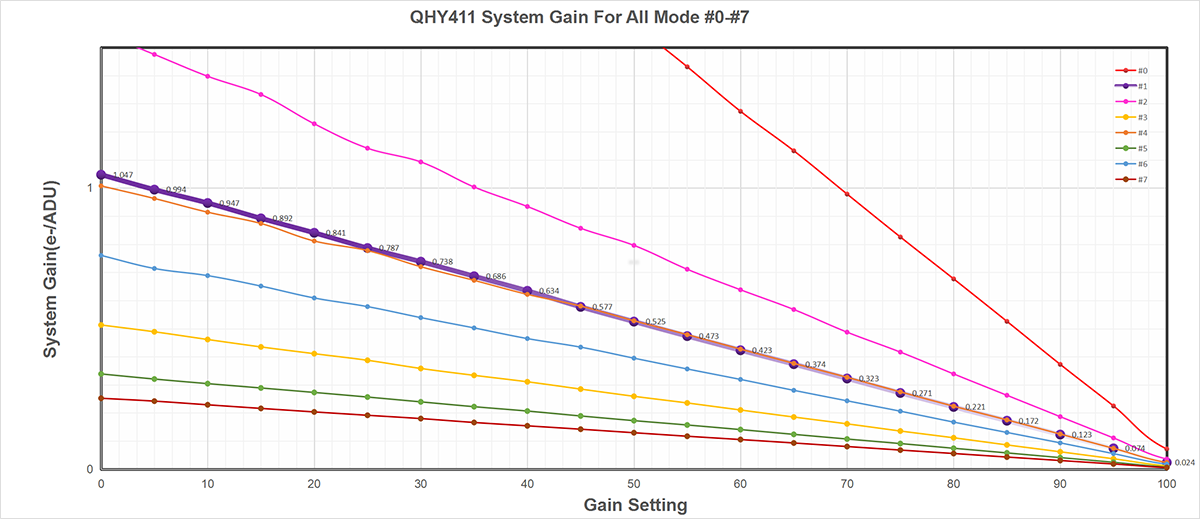
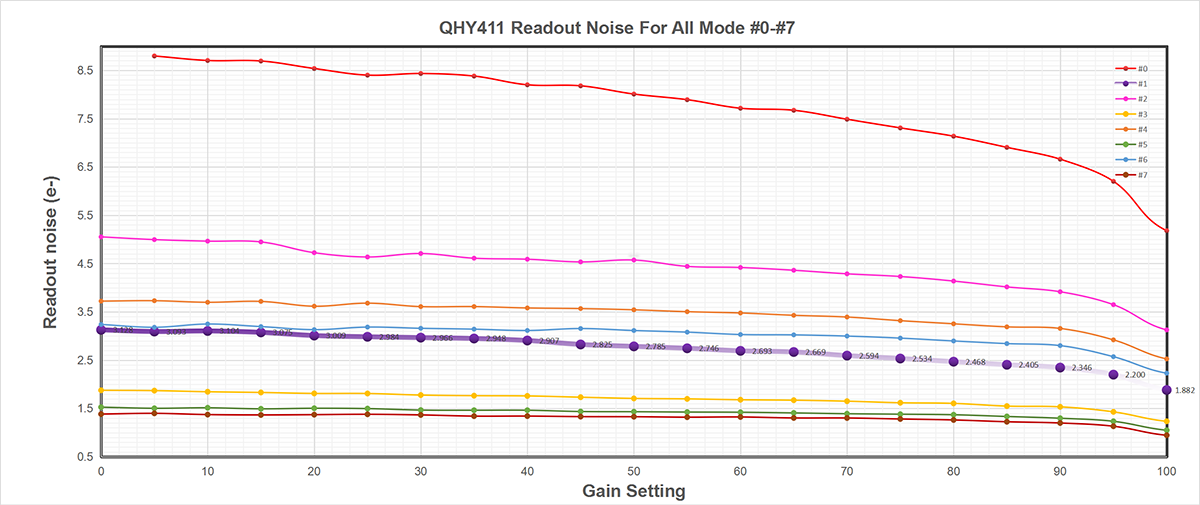
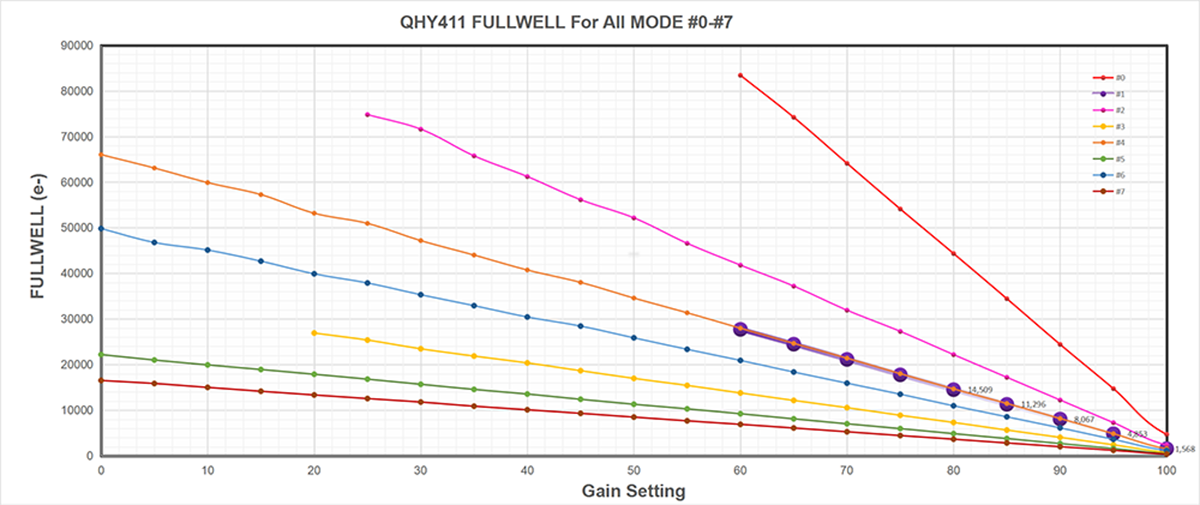
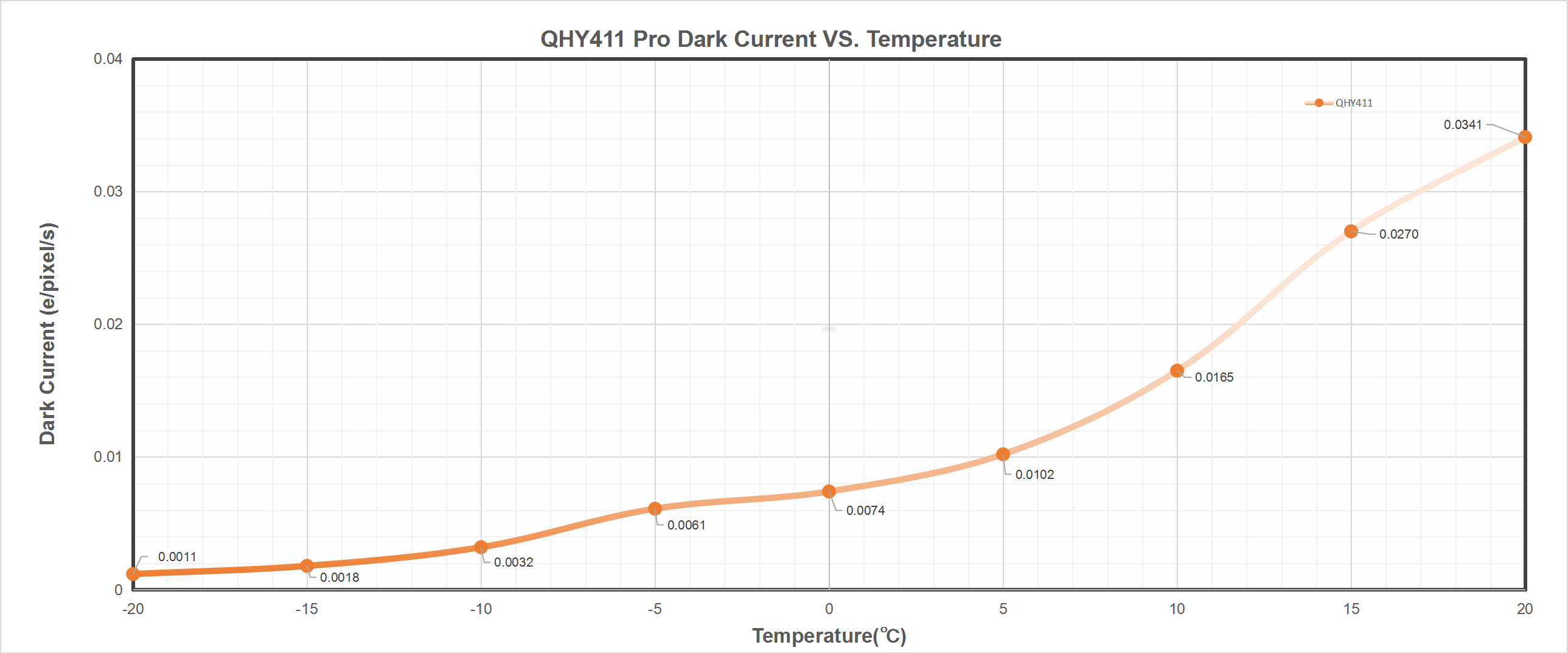
QHY411 QE. Since SONY has not release the absolutely QE curve of IMX411. There is only the relativity QE Curve. QHYCCD did some test of absolutely QE for the 3.76um BSI sensor in another model. It can be used for just a reference. This article can be found in https://www.qhyccd.com/index.php?m=content&c=index&a=show&catid=23&id=261


Some scholars in Italy found secrets hidden in the ancient manuscripts with the QHY411 camera.
IC 1396 Elephant’s Trunk Nebula in Bi-Color palette (cropped) Capture by Denis Salnikov with QHY461 camera and AG Optical 14.5″ iDK telescope. Full resolution image

Reviews
No customer reviews for the moment.






